Azaleas & Rhododendrons
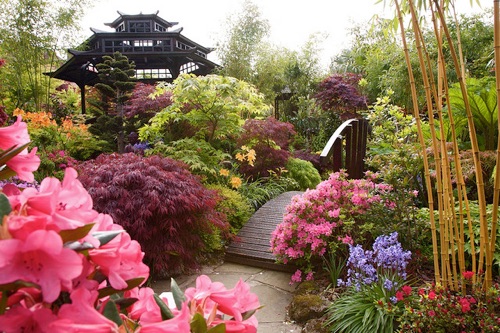
Botanically speaking there is no such species as an azalea, it is merely a term used by gardeners and nurserymen to refer to deciduous species and some evergreen species from Japan. Technically all azaleas are rhododendrons. However, we still call azaleas "azaleas"!
Azaleas can be deciduous (losing their leaves in winter) or evergreen and have one blossom per flower stem. Rhododendrons are all evergreen, grow larger than azaleas and have bigger, thicker, 'leathery' leaves. Rhododendron flowers are more bell shaped and each single flower stem has a cluster of these flowers.
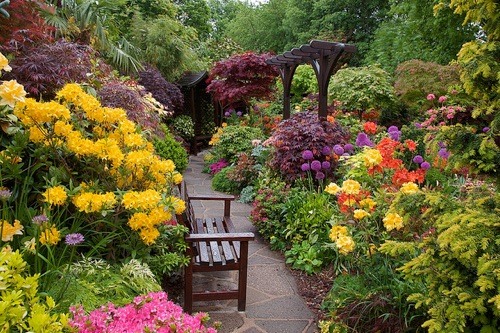
Rhododendrons and azaleas do best in well-drained acidic soil (4.5–6.0 pH).
It is important to deadhead as soon as flowering has finished, being careful to avoid damaging new buds close to the flower head, which will be next year’s flowers.
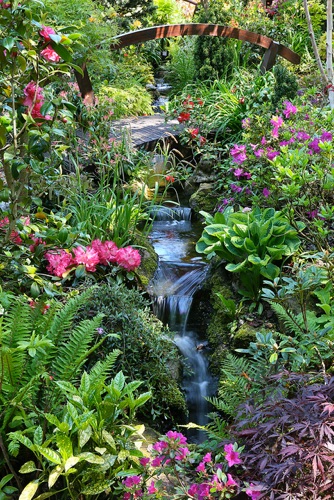
With their evergreen leaves and large size, we usually plant rhododendrons on the boundary of the property where they form a useful winter evergreen screen. Exceptions have been made along the stream to accommodate a few of the compact Yakushimanum 'Seven Dwarfs' series.
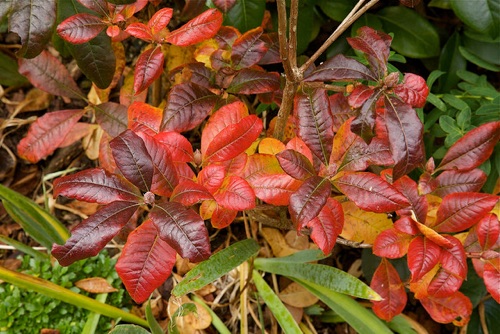
Some deciduous azaleas provide spectacular autumn leaf colour

Our azaleas bloom between April, May and June. Shade tolerant, they are supposed to prefer living near or under trees. However, we haven’t found it a problem having them exposed to full sun in our temperate climate.
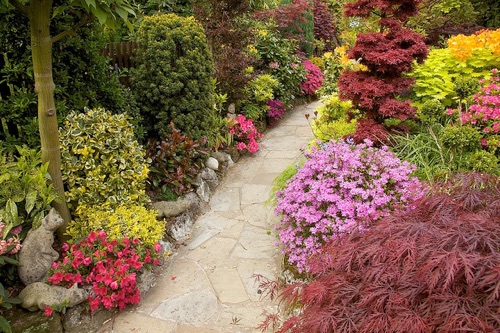
To avoid the plants becoming straggly, an annual prune after flowering will keep plants in a good shape and promote healthy growth.
Four Seasons Sitemap
© All Rights Reserved
Please do not download our photo images from this website to use for publication or any commercial reason without our permission.
Images may not be copied, reproduced, published or distributed in any medium without the expressed written permission of the copyright holder.
